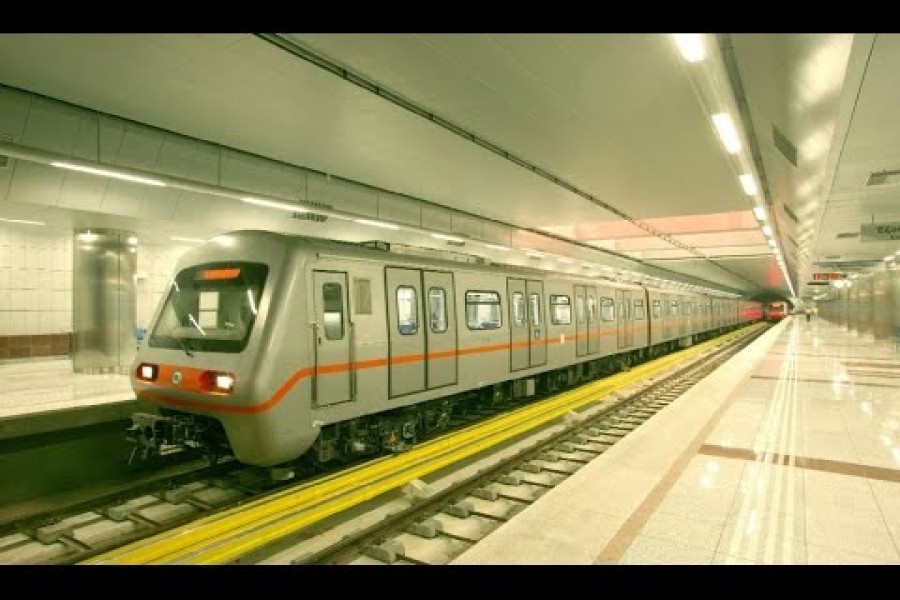Unveiled on Tuesday, a feasibility study on subways together with their preliminary design for Dhaka at a seminar paints a most positive and rosy picture for the capital that has earned the most dubious distinctions recently. A Spanish firm, TYPSA Consulting Engineers and Architects has been responsible for carrying out the feasibility study and developing the preliminary design since September 01, 2018. It now delivers the verdict in favour of going ahead with the project initiated by the Bangladesh Bridges Authority (BBA) under the instruction of the prime minister.
In total a network of 13 routes, 238-kilometre long, has been proposed by the Spanish firm, of which four will be constructed by 2030, another four by 2040 and the rest five by 2050. In the last 10 years, along with the additional subway lines, a few of those will be extended further within the city and beyond to connect furthest corner of Narayanganj and Savar. Clearly, the draft project is highly ambitious and challenging too. Nothing of this order has ever been undertaken in this country. In size and scope it looks to be the project of all megaprojects, including the Padma Bridge, undertaken so far.
Obviously the cost for execution of the three-phase project will be astronomical too. In the first phase, the four routes will cost an estimated amount of US$ 41.30 billion; in the second phase, the cost will be US$ 34.47 billion and in the third phase, it is expected to be US$ 27.02 billion. Compared to the less than US$ 4.0 billion expenditure on the Padma Bridge, the money to be spent on the proposed subway will be more than 25 times higher. Naturally, the thought that strikes one is, if such an awful lot of money is worth spending. The consulting firm assures it is. Its return will be limitless not just in terms of ease of commuting and saving time but also in terms of physical and mental well-being of the city's inhabitants and all who commute to it for different purposes.
The second most air-polluted, the most sound-polluted and the most unliveable capital city in the world, Dhaka can live behind all such unhealthy and derogatory epithets if and when the project achieves its objectives. Road Transport and Bridges Minister, Obaidul Quader expressed his discontent, terming the capital's image shameful. Anyone cannot but agree with him on the point that for a nation that is doing spectacularly well on almost all fronts should have a capital so disgraceful. However, it is hard to agree with him when he squarely blames the two city mayors for their failure to improve conditions in the city to match the country's progress.
Have the mayors been vested with enough power to execute any large and comprehensive plan? They are hardly responsible for the unplanned and chaotic growth of the city and the mounting problems over the decades. Development and repair works undertaken by several organisations and utility services are yet to be coordinated. Without introduction of city governance and handing them the power required, they cannot undertake and oversee such works for integration with new projects into a compact whole. Question may be raised about the logic of involvement of the BBA with the subway feasibility study. Why not the two city corporations and the local government division of the ministry concerned?
However, more important than the image crisis is the restoring of a wholesome environment of the capital city or for that matter of the entire country, in which inhaling air will not cause damage to the lungs, respiratory, kidney and heart diseases. According to a latest study, the polluted air has been diminishing longevity of the population by four years on an average. If the air and noise pollution can be minimised, grid-lock on roads eliminated, productivity of the people will increase significantly, contributing to the country's gross domestic product (GDP).
The billion-dollar question, though, is: where will the fund come from? Minister Obaidul Quader is optimistic that it can be managed. If the Padma Bridge can be financed from internal sources, pooling the finance for the subway project will not be impossible, he hopes. If fund constraint does not stand in the way and the project goes ahead, the subways will be excavated 25-70 beneath the ground level with the help of tunnel boring machine (TBM). The TBM system, known as mole, digs a hole underground horizontally and at the same time fashion the lining of the tunnel wall. Thus it helps in limiting disturbances to surrounding areas and creating a smooth tunnel wall quite fast. Hopefully, Dhaka will not suffer once more the fallout of construction of the overhead metro rail and least of all the non-negotiable surface communication on account of heaps of soil dug out like that of Kolkata earlier.
The expansive network of subway can bring about a sea-change in the capital's communication rendering private cars and dilapidated public buses almost redundant. This is where the nation can look forward to an advanced system of subway communication---one that will radically change people's habit and ask from them comparable sensitivity to clean the Augean stable on the ground and in the surroundings where the rivers demand extra care for restoring their and the city's physical and environmental health.


